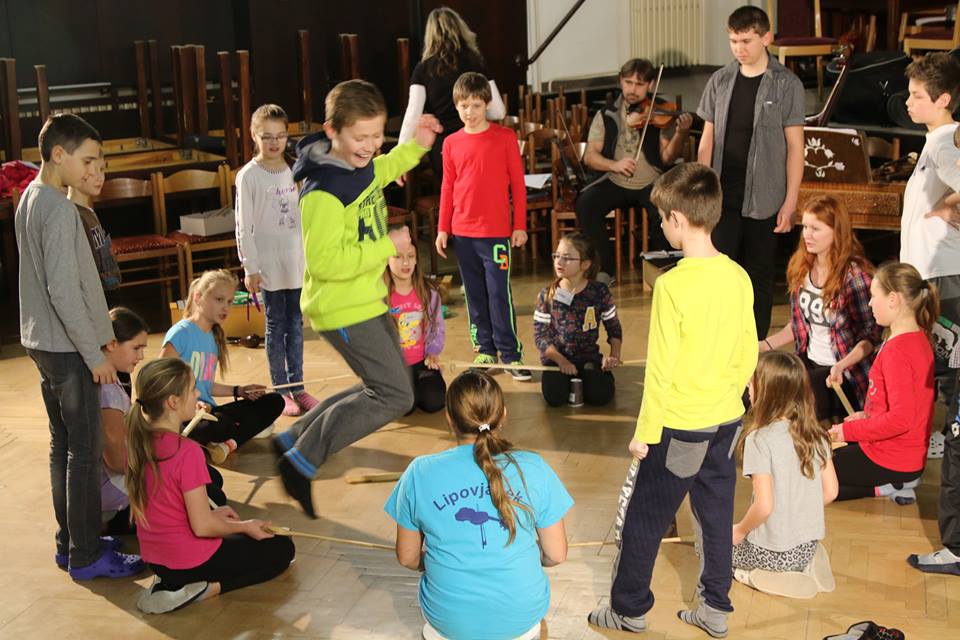In the area of the Czech Republic, some traditions and costumes which are the part of folk culture tradition are still maintained. Most often they are connected with ceremonial situations, representative behaviour and festive occasions in the life of an individual or society. We usually classify costumes as annual, family (further agricultural, religious etc.), according to the ceremonies in which they are present. The ceremonies include literary, song, music, dance and drama structures (Kandert 2007).
The popular folk traditions and costumes are connected e. g. with carnival tradition which is still maintained not only in the Czech Republic but also in various corners of Europe. It comes alive every year at the turn of winter and spring. Among the common features processions of people wearing costumes, unrestrained and playful entertainment and a wide area of both active and passive participants belong (Frolec 1979). The carnival is the period from the Three Kings’ Day until the beginning of Easter fast. Its end is marked with (v)ostatky, voračky, masopust, končiny, fašank (Večerková 2000). On last three carnival days, the various costumes take place, the most typical form are the carnival rounds. In the procession of the carnival, the magic fertile and protective motives prevail (the costumes of bear, horse, or billy goat) and cult of the death (the costume of Jew, Staňková 2007).
The specific manifestation occurring during the ceremonial carnival round is a male sword dance. Until today, it is maintained in three localities in south-east Moravia. It is accompanied by a melody in a 2/4 time, it has a chain form, jump step and essential property are wooden swords decorated by metal circles which rattle during the dance. It is most often known as “pod šable” [“under swords”] (Popelka 1979, Matuszková 2000).
References
- Frolec, V. (ed.) (1979). Masopustní tradice [Carnival Tradition]. Lidová kultura a současnost [Folk Culture and Today]. Vol. 5. Brno: Blok, pp. 15-16.
- Kandert, J. (2007). Obřad [Ceremony]. In S. Brouček & R. Jeřábek (eds.). Lidová kultura [Folk Culture]. Národopisná encyklopedie Čech, Moravy a Slezska. Vol. 3. Praha: Mladá fronta, p. 655.
- Matuszková, J. (2000). Typologie lidového tance [Typology of Folk Dance]. In J. Jančář et al. (eds). Lidová kultura na Moravě [Folk Culture in Moravia]. Vlastivěda moravská. Země a lid. Nová řada. Vol. 10. Strážnice: Ústav lidové kultury ve Strážnici; Brno: Muzejní a vlastivědná společnost v Brně, pp. 306–313.
- Popelka, P. (1979). Ekologie straňanského masopustního tance Pod šable [The Ecology of a Carnival Dance Pod Šable from Strání]. In V. Frolec (ed.). Masopustní tradice [Carnival Tradition]. Lidová kultura a současnost. Vol. 5. Brno: Blok, pp. 165–171.
- Staňková, J. (2007). Masopust [Carnival]. In S. Brouček & R. Jeřábek (eds.). Lidová kultura [Folk Culture]. Národopisná encyklopedie Čech, Moravy a Slezska. Vol. 3. Praha: Mladá fronta, pp. 539–543.
- Večerková, E. (2000). Výroční obyčeje a obyčeje spjaté se zemědělstvím [Annual Customs and Customs Connected with Agriculture]. In J. Jančář et al. (eds). Lidová kultura na Moravě [Folk Culture in Moravia]. Vlastivěda moravská. Země a lid. Nová řada. Vol. 10. Strážnice: Ústav lidové kultury ve Strážnici; Brno: Muzejní a vlastivědná společnost v Brně, pp. 187–213.
- Zíbrt, Č. (1950). Veselé chvíle v životě lidu českého [Joyful Moments in the Life of Czech People]. Praha: Vyšehrad.
Module Overview |
